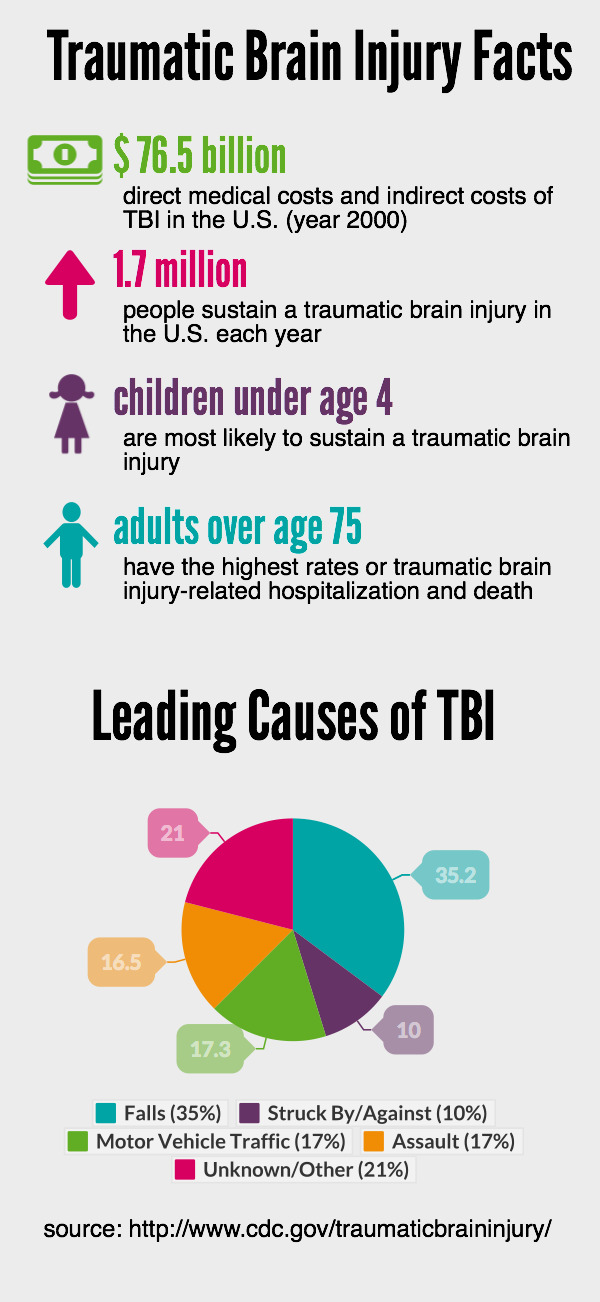Traumatic Brain Injury
Our Research
Recent advances have allowed us to produce induced pluripotent stem cell-derived neural stem/progenitor cells (iPSC-NSCs) with therapeutic and regenerative potential. Our lab uses these iPSC-NSC lines in conjunction with our pig model of neural injury to explore potential therapies for traumatic brain injury.
What is Tramatic Brain Injury?
A traumatic brain injury (TBI) occurs when an external force causes damage to the brain. Each year, on average, TBIs are associated with an estimated 1.1 million emergency department visits, 235,000 hospitalizations, and 50,000 deaths in the United States.
TBIs can be penetrating, in which an external object actually penetrates the surface of the brain. TBIs can also be concussive, in which the external force does not penetrate the brain but still causes significant damage. Examples of common causes of TBI are falls, motor vehicle accidents, and a blow to the head from or against an object.
Demographics of TBI
Persons of all ages, ethnicities, and incomes can be affected by a TBI. Babies, toddlers, and young children make up the largest percentage of individuals that experience a concussive TBI- largely due to falls. Adolescents and adults make up the largest percentage of individuals that experience a penetrating TBI. Statistics show that the rate of TBI deaths is three times higher among males than among females.
Current Challenges
There is currently no effective treatment for a person who has sustained a TBI. When considering the best way to combat a TBI, there are two main factors to concentrate on. First, there is the loss of neural tissue due to the initial injury. Next, this causes neural and immune cells to release inflammatory cytokines, resulting in secondary injury and further brain damage. To effectively treat a TBI, we believe that both the initial loss of neural tissue and the secondary inflammatory response should be considered.
Traumatic Brain Injury Facts
